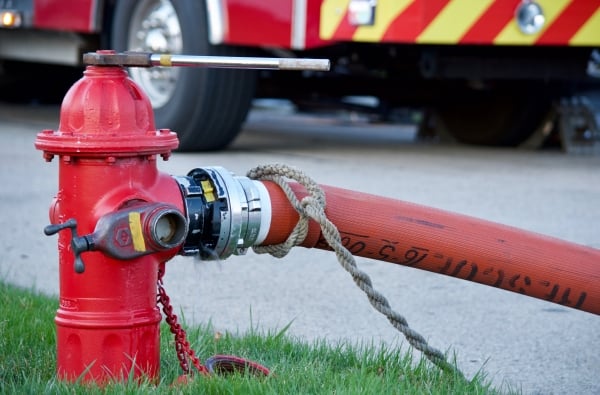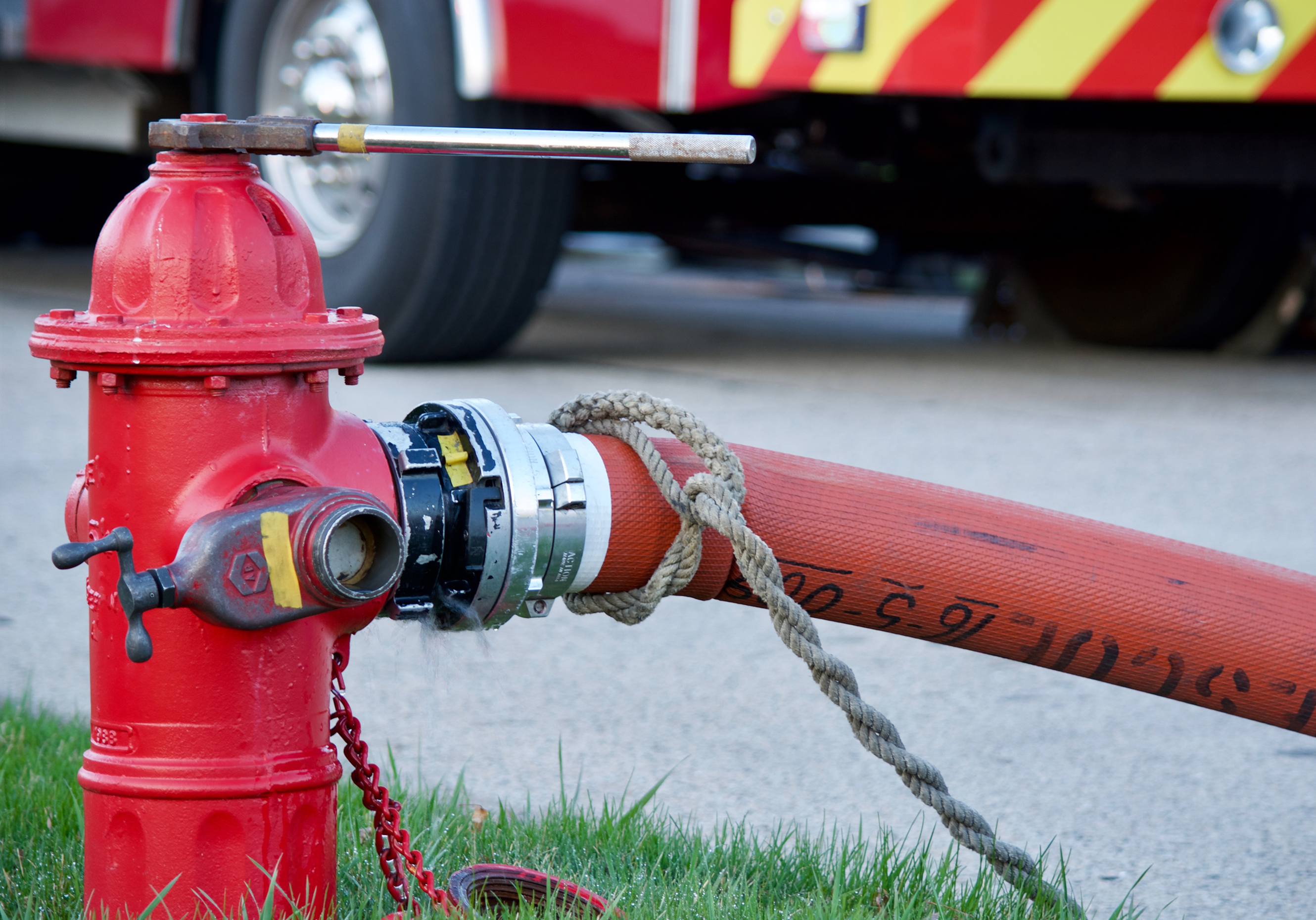Part III of the If Fire Strikes, Make Every Second Count series.
It’s easy to overlook fire hydrants — until a fire starts. Then hydrants become crucial. Without them, firefighters are less effective at saving your home or business. Although firefighters carry water on their trucks, it may not be enough to put out a large fire.
When fighting a big, growing fire, firefighters need unobstructed access to a functioning hydrant. Otherwise, they must spend precious time finding a hydrant or clearing a path to one — that’s time they could be extinguishing the fire, reducing property damage, and saving lives.
Before we offer tips for helping firefighters access hydrants, we remind you to always call 911 immediately if a fire starts. Then decide if you feel safe putting the fire out yourself or need to evacuate.
 Firefighters need easy access to hydrants to do their job.
Firefighters need easy access to hydrants to do their job.
Related:
Fire Safety Tips for Consumers
Clear the way
What do firefighters do when they arrive on the scene of a fire only to find the path to a hydrant is blocked?
One answer comes from California. Anaheim Fire & Rescue needed access to a hydrant blocked by an illegally parked car. They punched out the back windows and strung the hose through the holes. They considered other options — running the hose under or over the car — but had to discard both. The hose didn’t fit under the car, and running it over the top would have caused more damage than punching out the windows.1 The incident offers a striking reminder to never park in a fire lane or in front of a hydrant.
In many places, fire lanes are marked with a red line on the curb, but just because there’s no line near the hydrant doesn’t mean parking is legal there. Washington state law prohibits parking within 15 feet of a hydrant.2 Always obey the state and local rules in your area about parking near a hydrant.
Cars aren’t the only obstacles firefighters have to overcome to access hydrants. Here are other ways you can clear the way for firefighters.
If you have a hydrant on your property:
- Keep vegetation away from hydrants. Tall grass, blackberry bushes, and other plants prevent firefighters from seeing hydrants and may also block access.
- Don’t clutter the space around a fire hydrant with sculptures, birdbaths, or other items.
- Clear snow from around the hydrant in winter.
- If you have any questions about your responsibilities for a hydrant on your property, contact your local fire marshal.
Related:
If Fire Strikes, Make Every Second Count: Access to Your Home
Keep hydrants visible
Firefighters need to see hydrants clearly from the street, and not just so they know where they are. Firefighters also need to see the color of the hydrant. Have you ever noticed fire hydrants come in different colors? They do, and not for decoration. The color indicates the water-flow capacity of the hydrant, and firefighters check the color to determine if a hydrant matches their needs.
To help firefighters:
- Do not paint or otherwise change the color of any part of a fire hydrant.
- Do not put stickers on a hydrant or affix anything to it.
Report problems
Hydrants are only useful if they’re working properly. If you see anything wrong with a hydrant, report it. For example, a hydrant shouldn’t leak. Hydrants are designed to be frost-proof and contain a mechanism to keep water out of them when they’re not in use. If that mechanism isn’t working, the hydrant could fill up with water and freeze, making it useless to firefighters. A leak is one sign the mechanism is failing.
In most places, water departments maintain hydrants, so call your local department to report leaks or any other potential problems you notice.
[1] USA Today, https://www.usatoday.com/story/news/nation/2019/02/26/california-firefighters-string-hose-through-car-parked-fire-hydrant/2999403002/
[2] Revised Code of Washington, https://apps.leg.wa.gov/rcw/default.aspx?cite=46.61.570











